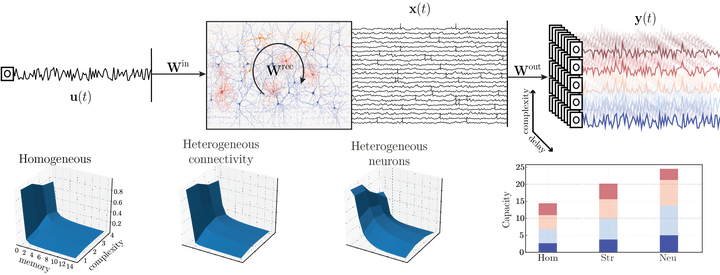Leveraging heterogeneity for neural computation with fading memory in layer 2/3 cortical microcircuits
PLoS Computational Biology

Abstract
Complexity and heterogeneity are intrinsic to neurobiological systems, manifest in every process, at every scale, and are inextricably linked to the systems’ emergent collective behaviours and function. However, the majority of studies addressing the dynamics and computational properties of biologically inspired cortical microcircuits tend to assume (often for the sake of analytical tractability) a great degree of homogeneity in both neuronal and synaptic/connectivity parameters. While simplification and reductionism are necessary to understand the brain’s functional principles, disregarding the existence of the multiple heterogeneities in the cortical composition, which may be at the core of its computational proficiency, will inevitably fail to account for important phenomena and limit the scope and generalizability of cortical models. We address these issues by studying the individual and composite functional roles of heterogeneities in neuronal, synaptic and structural properties in a biophysically plausible layer 2/3 microcircuit model, built and constrained by multiple sources of empirical data. This approach was made possible by the emergence of large-scale, well curated databases, as well as the substantial improvements in experimental methodologies achieved over the last few years. Our results show that variability in single neuron parameters is the dominant source of functional specialization, leading to highly proficient microcircuits with much higher computational power than their homogeneous counterparts. We further show that fully heterogeneous circuits, which are closest to the biophysical reality, owe their response properties to the differential contribution of different sources of heterogeneity.